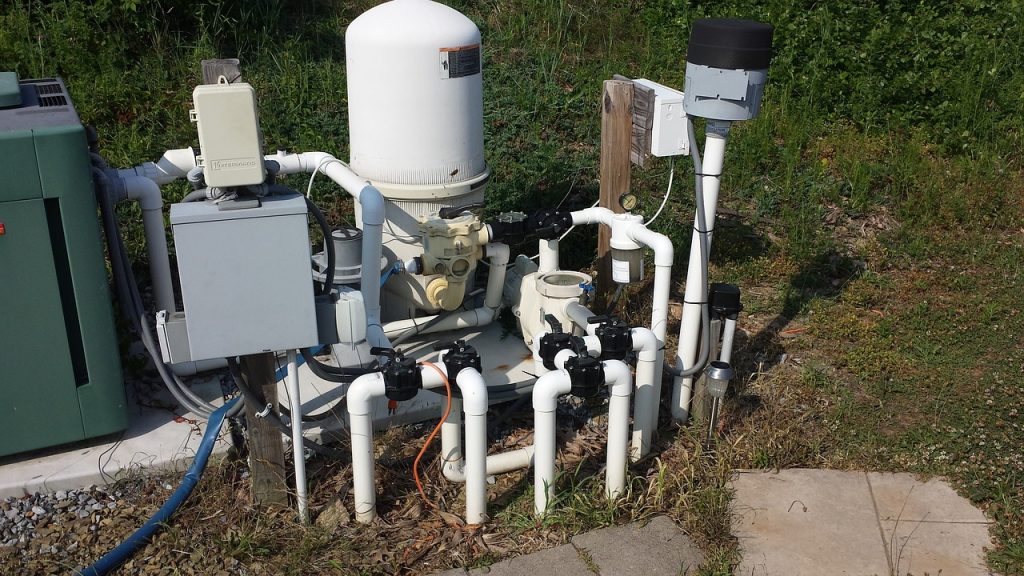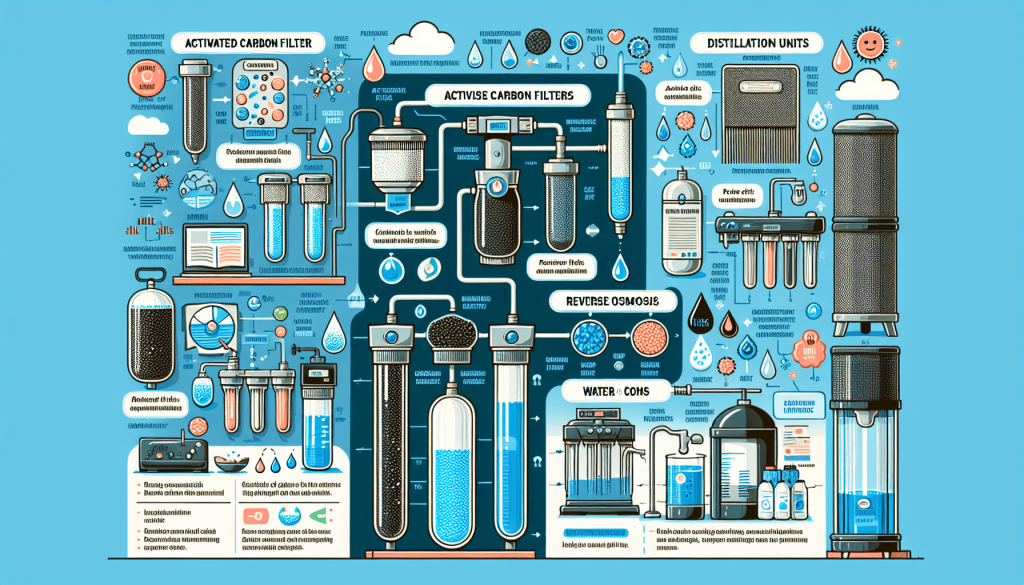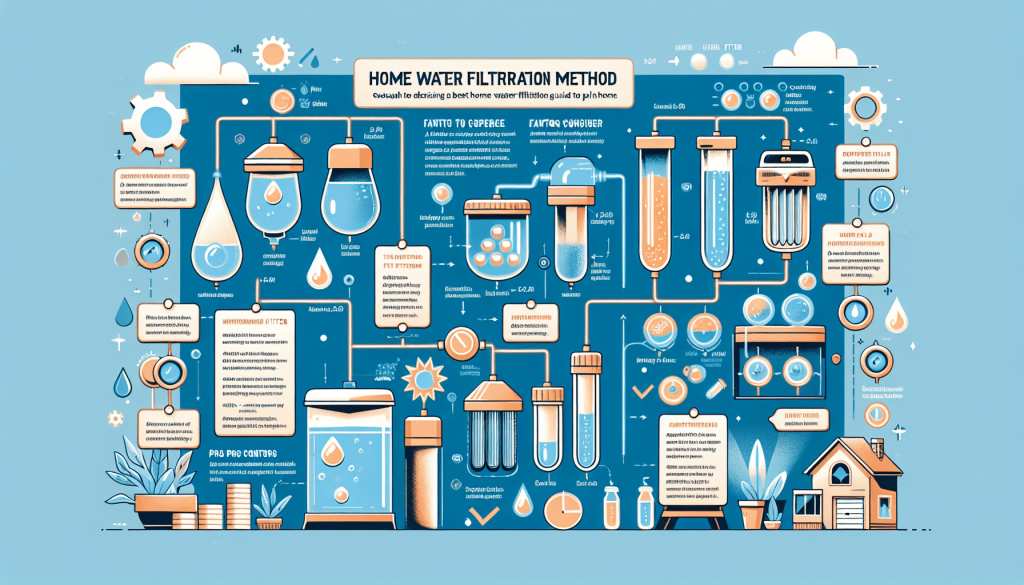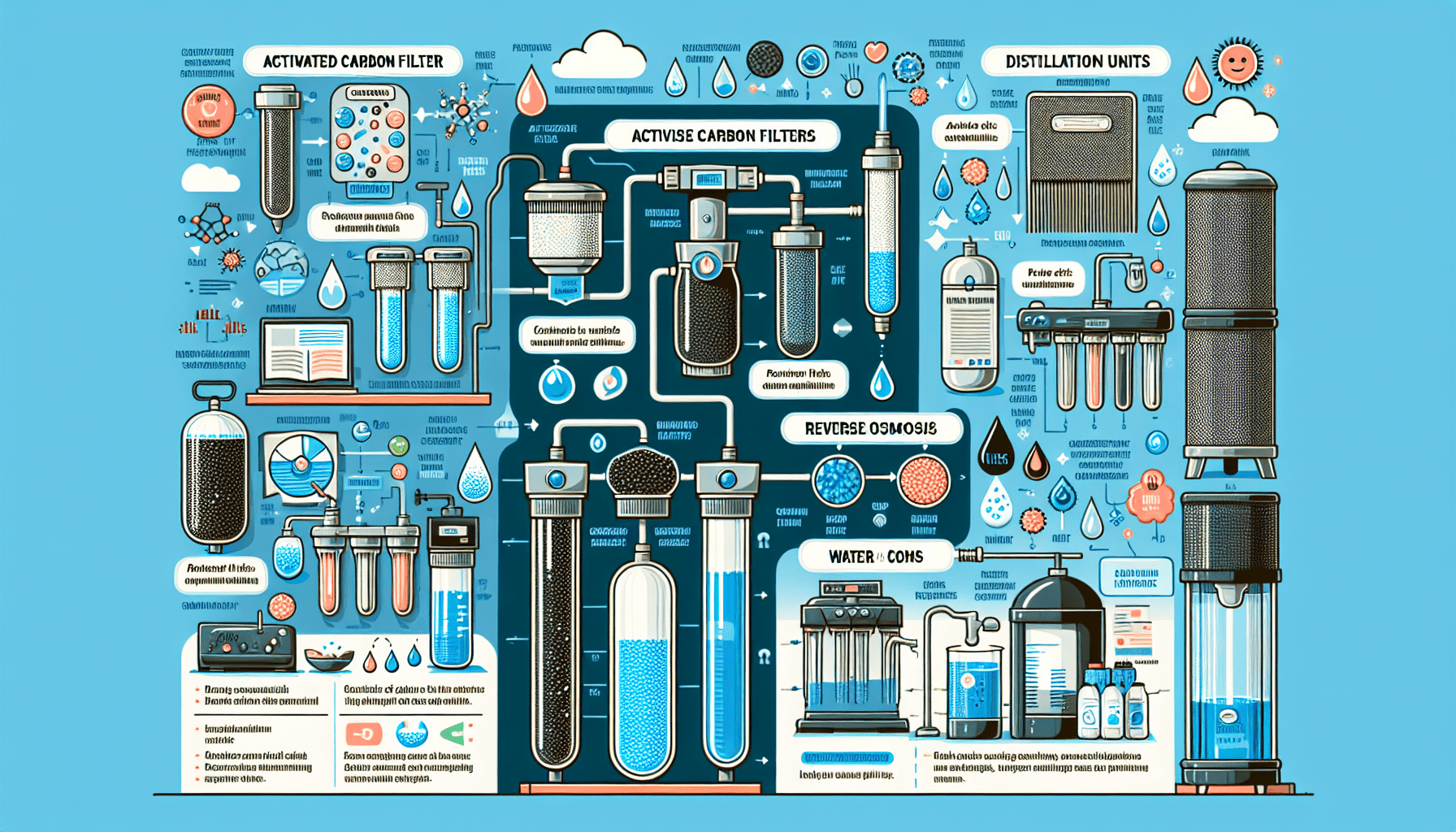Are you tired of relying on bottled water or dealing with murky tap water? If so, you’re not alone. Many homeowners are searching for the best water filter method to ensure clean and safe drinking water at home. With so many options available, it can be overwhelming to choose the right one for your needs. In this article, we will explore different water filter methods and help you determine the most effective solution for your home. Say goodbye to impurities and hello to refreshing, purified water with the best water filter method for your home!
Reverse Osmosis
How Reverse Osmosis Works
Reverse osmosis is a water filtration method that uses a semipermeable membrane to remove contaminants from water. The process involves applying pressure to the water to force it through the membrane, effectively trapping impurities while allowing only pure water molecules to pass through.
During reverse osmosis, the water is first passed through a pre-filter to remove larger particles such as sediment, dirt, and rust. It then goes through the semipermeable membrane, which has extremely tiny pores that can only allow water molecules to pass. This effectively removes harmful substances like bacteria, viruses, heavy metals, and chemicals.
Advantages of Reverse Osmosis
Reverse osmosis has several advantages that make it a popular choice for home water filtration. Firstly, it is extremely effective in removing a wide range of contaminants from the water. This ensures that the water you consume is clean and safe for drinking, cooking, and other daily uses.
Another advantage of reverse osmosis is that it does not require any chemicals or electricity to operate. The process relies solely on water pressure, making it an eco-friendly and cost-effective option for water filtration. Additionally, reverse osmosis systems are compact and easy to install, making them suitable for homes with limited space.
Disadvantages of Reverse Osmosis
While reverse osmosis is highly effective in removing contaminants, it does have certain drawbacks. One of the main disadvantages is that the process removes not only harmful substances but also beneficial minerals from the water. This can result in demineralized water that lacks essential nutrients.
Another limitation of reverse osmosis is its relatively slow filtration rate. The process can be time-consuming, especially when large quantities of water need to be treated. Additionally, reverse osmosis systems may produce wastewater as a byproduct, which can be a concern in areas with water scarcity.
Despite these disadvantages, reverse osmosis remains a popular choice for home water filtration due to its excellent purification capabilities and ease of use.
Activated Carbon Filtration
How Activated Carbon Filtration Works
Activated carbon filtration is a method that utilizes a special type of carbon to remove contaminants from water. The carbon used in this filtration process is processed to have a large surface area, which enhances its adsorption capabilities. Adsorption is the process by which contaminants stick to the surface of the carbon.
When water passes through activated carbon, the contaminants in the water are attracted to the carbon surface. This includes substances like chlorine, volatile organic compounds (VOCs), and unpleasant odors. The carbon effectively traps these contaminants, leaving the water cleaner and more enjoyable to drink.
Advantages of Activated Carbon Filtration
Activated carbon filtration offers several advantages for home water filtration. Firstly, it is highly effective in removing chlorine, which is commonly found in tap water and can affect the taste and odor of the water. By removing chlorine, activated carbon filters significantly improve the overall quality and taste of the water.
Another advantage is that activated carbon filtration can remove a wide range of organic compounds that may be present in the water, such as pesticides and herbicides. This ensures that the water is free from potentially harmful substances, making it safer for consumption.
Activated carbon filters are also relatively low-maintenance and easy to replace. They require minimal installation and can be conveniently integrated into existing water filtration systems or used as standalone filters. Additionally, these filters are affordable and widely available, making them a popular choice among homeowners.
Disadvantages of Activated Carbon Filtration
One limitation of activated carbon filtration is that it may not effectively remove certain inorganic compounds, such as heavy metals and minerals. If these substances are of particular concern in your water supply, additional filtration methods may be necessary.
Activated carbon filters also have a limited lifespan and need to be replaced regularly to maintain their optimal performance. The frequency of replacement depends on the amount of water being filtered and the levels of contaminants in the water.
Despite these limitations, activated carbon filtration remains a reliable and effective method for improving the taste and quality of home drinking water.

Ion Exchange
How Ion Exchange Works
Ion exchange is a water filtration process that involves the exchange of ions between a solid resin and the water being treated. The resin used in this process is typically coated with sodium or potassium ions. As the water passes through the resin, ions in the water that are of higher concentration, such as calcium and magnesium ions, are exchanged with sodium or potassium ions.
The exchange of ions effectively removes hardness from the water, as calcium and magnesium ions are responsible for water hardness. By removing these ions, ion exchange filters can significantly reduce the negative effects of hard water, such as scale buildup in pipes and appliances.
Advantages of Ion Exchange
One of the main advantages of ion exchange is its ability to soften water. Softened water has various benefits, including smoother skin and hair, reduced soap scum and residue, and improved efficiency of water-using appliances. It can also extend the lifespan of plumbing systems by preventing scale buildup.
Another advantage of ion exchange is its continuous operation. Once the water softener system is installed, it continuously treats the water as it flows through, ensuring a constant supply of softened water throughout your home.
Furthermore, ion exchange systems are relatively compact and can be easily installed in homes. They require minimal maintenance, with resin replacement being the main task, and they can be customized to meet specific water hardness levels and household needs.
Disadvantages of Ion Exchange
One notable disadvantage of ion exchange is the need for periodic regeneration. Over time, the resin bed becomes saturated with the exchanged ions and needs to be regenerated to remove the accumulated hardness ions. This process involves flushing the resin with a salt solution, which can result in increased sodium or potassium levels in the softened water.
It is worth noting that individuals on low-sodium or potassium diets may need to consider alternative water treatment methods. Additionally, the regeneration process can temporarily interrupt the flow of softened water.
Despite these drawbacks, ion exchange remains an effective method for water softening and provides numerous benefits for homes with hard water.
Distillation
How Distillation Works
distillation is a water purification process that involves heating water to create steam and then condensing the steam back into liquid form. This process effectively removes impurities, as the impurities do not vaporize and are left behind during the distillation process.
During distillation, water is heated in a container, causing it to turn into steam. The steam rises and passes through a condenser, where it cools down and returns to its liquid state. The condensed water is collected separately, leaving behind the impurities and contaminants that were present in the original water.
Advantages of Distillation
Distillation provides several advantages when it comes to water purification. One of the main advantages is its ability to remove a wide range of contaminants, including bacteria, viruses, heavy metals, and chemicals. This ensures that the distilled water is pure and safe for consumption.
Distilled water is also free from minerals and impurities, making it ideal for various applications, such as laboratory experiments and medical equipment. Furthermore, distillation can improve the taste and odor of the water, as many impurities that contribute to these issues are left behind during the process.
Distillation is a reliable and well-established method for water purification, with a long history of use. It is a straightforward process and does not require any additional chemicals or complex equipment, making it a practical option for home water purification.
Disadvantages of Distillation
One of the main disadvantages of distillation is its relatively slow process. It requires time and energy to heat the water and produce steam, resulting in a lower production rate compared to other water purification methods. This can be a drawback when large quantities of purified water are required.
Additionally, distillation removes not only contaminants but also essential minerals present in the water. This can result in demineralized water, which may lack certain nutrients that are beneficial for health.
Furthermore, distillation can be energy-intensive, especially when used on a large scale. The process requires consistent heating and cooling, which can contribute to higher energy consumption.
Despite these drawbacks, distillation remains an effective method for purifying water and ensuring its safety for consumption.

UV Water Purification
How UV Water Purification Works
UV water purification utilizes ultraviolet light to destroy and deactivate harmful microorganisms present in the water. UV light effectively disrupts the DNA of bacteria, viruses, and other pathogens, rendering them unable to reproduce and causing them to become inactive.
During UV water purification, water passes through a chamber where it is exposed to UV light. The light emitted by specialized UV lamps targets the genetic material of microorganisms, penetrating their cells and disrupting their DNA. This prevents the microorganisms from reproducing and renders them harmless.
Advantages of UV Water Purification
UV water purification offers several advantages for home water treatment. Firstly, it effectively destroys a wide range of microorganisms, including bacteria, viruses, and parasites. This makes the water safe for consumption and eliminates the risk of waterborne illnesses.
Another advantage is that UV purification does not involve any chemicals or additives. It relies solely on the power of ultraviolet light, making it a safe and eco-friendly method for water treatment. UV systems also require minimal maintenance, with periodic lamp replacement being the main task.
UV water purification is a relatively fast process, with immediate results. There is no need for additional contact time or waiting for chemicals to react. Once the water passes through the UV chamber, it is instantly disinfected and ready for use.
Disadvantages of UV Water Purification
One limitation of UV water purification is that it does not remove certain non-living contaminants, such as heavy metals, chemicals, and sediment. If these substances are a concern in your water supply, additional filtration methods may be necessary.
Additionally, UV water purification relies on the power supply to operate. In areas with frequent power outages or unreliable electricity, having a backup power source may be necessary to ensure the continuous operation of the UV system.
Despite these limitations, UV water purification is a highly effective and efficient method for disinfecting water, providing peace of mind for homeowners concerned about microorganisms in their water supply.
Ceramic Water Filters
How Ceramic Water Filters Work
Ceramic water filters are a type of water purification method that utilizes the porosity of ceramic material to trap contaminants and improve water quality. These filters are typically made from clay, which is processed and fired to create a porous structure capable of filtering out impurities.
Water passes through the tiny pores of the ceramic filter, which act as a barrier, trapping sediment, bacteria, protozoa, and other particles. The ceramic material also has antibacterial properties, further enhancing the purification process and ensuring the water is safe for consumption.
Advantages of Ceramic Water Filters
Ceramic water filters offer several advantages for home use. One of the main advantages is their ability to remove a wide range of contaminants, including bacteria and protozoa. This makes them an effective method for producing clean and safe drinking water.
One of the notable benefits of ceramic filters is that they do not require electricity or complex maintenance. The filtration process is gravity-driven, allowing for ease of use and minimal maintenance requirements. Ceramic filters are also portable and can be conveniently used in various settings, such as during camping or emergency situations.
These filters are cost-effective and long-lasting, with a lifespan ranging from several months to over a year, depending on usage and water quality. This makes them a practical and affordable option for water purification.
Disadvantages of Ceramic Water Filters
While ceramic filters are effective in removing many contaminants, they may not effectively remove certain chemicals and heavy metals. If these substances are of concern in your water supply, additional filtration methods may be necessary.
Another limitation of ceramic filters is their relatively slow filtration rate. The small pores require time for the water to pass through, resulting in a slower flow rate compared to other filtration methods. This can be inconvenient when large quantities of water need to be filtered.
Despite these limitations, ceramic water filters are a reliable and widely used method for improving the quality of drinking water, particularly in areas with limited access to clean water sources.

Water Softeners
How Water Softeners Work
Water softeners are designed to address the issue of hard water by removing the minerals responsible for water hardness, primarily calcium and magnesium ions. These ions are replaced with sodium or potassium ions during the water softening process.
The water softening process involves passing the water through a tank filled with resin beads. The resin beads are coated with sodium or potassium ions. As the hard water flows through the resin, the calcium and magnesium ions in the water are attracted to the resin beads and are exchanged with sodium or potassium ions.
Over time, the resin beads become saturated with hardness ions and need to be regenerated. This regeneration process involves flushing the resin with a salt (sodium chloride or potassium chloride) solution. The salt solution recharges the resin, replacing the hardness ions with sodium or potassium ions, making the resin ready for further water softening.
Advantages of Water Softeners
Water softeners provide several advantages for homes with hard water. Firstly, they significantly reduce the negative effects of hard water, such as scale buildup in pipes and appliances. This can lead to improved efficiency and longevity of water-using appliances such as dishwashers, washing machines, and water heaters.
Water softeners also help prevent soap scum and residue, allowing soap to lather more easily and effectively. This results in cleaner dishes, brighter and softer laundry, and smoother skin and hair after bathing.
Another advantage is the increased lifespan of plumbing systems. By reducing the scale buildup in pipes, water softeners can help prevent clogs and plumbing issues, saving homeowners from costly repairs.
Disadvantages of Water Softeners
One disadvantage of water softeners is the increased sodium or potassium content in the softened water. This can be a concern for individuals on low-sodium or low-potassium diets, as the softened water contributes to their overall intake of these minerals. Alternative water treatment methods may need to be considered in such cases.
Additionally, the regeneration process of water softeners can result in increased water consumption and the discharge of brine waste. It is important to consider the environmental impact of water softeners and ensure proper disposal of the regenerated brine.
Despite these drawbacks, water softeners remain an effective solution for homes with hard water, providing numerous benefits and improving the overall quality of water used in daily activities.
Sediment Filters
How Sediment Filters Work
Sediment filters, also known as particulate filters, are designed to remove visible particles and sediment from water. These filters consist of various media such as sand, gravel, or synthetic fibers, which act as barriers to trap and remove particles from the water.
As water flows through the sediment filter, the larger particles and sediment become trapped in the filter media, allowing only clear water to pass through. This filtration process helps improve the clarity and quality of water, reducing the presence of visible impurities.
Advantages of Sediment Filters
Sediment filters offer several advantages for home water treatment. Firstly, they provide an effective means of removing visible particles and sediment from the water supply. This improves the overall appearance and clarity of the water, making it more visually appealing.
By removing sediment, sediment filters can also help prolong the lifespan of other water filtration systems and appliances. Sediment can cause clogging and damage to pipes, faucets, and water-using appliances, which can lead to costly repairs or replacements. Sediment filters act as a first line of defense, reducing the amount of sediment that reaches these systems.
Another advantage is that sediment filters are relatively low-cost and simple to install. They can be used as standalone filters or as part of a larger water filtration system, depending on the specific needs and preferences of the homeowner.
Disadvantages of Sediment Filters
It is important to note that sediment filters are primarily designed to remove larger particles and visible impurities. They may not effectively remove dissolved substances or certain microorganisms. If these contaminants are of concern in your water supply, additional filtration methods may be necessary.
Additionally, sediment filters may require regular maintenance and replacement of filter cartridges to maintain their optimal performance. The frequency of replacement depends on the level of sediment in the water and the flow rate.
Despite these limitations, sediment filters provide a practical and cost-effective solution for improving the visual quality of water and protecting other water-using systems in your home.

Granular Activated Carbon Filters
How Granular Activated Carbon Filters Work
Granular activated carbon (GAC) filters use porous carbon material, such as activated charcoal, to remove contaminants from water. These filters contain granules or pellets of carbon that provide a large surface area for adsorption.
As water passes through the GAC filter, contaminants such as chlorine, volatile organic compounds (VOCs), and certain chemicals are attracted to the carbon surface and become trapped. The carbon effectively adsorbs these substances, leaving behind cleaner and purer water.
Advantages of Granular Activated Carbon Filters
Granular activated carbon filters offer several advantages for home water filtration. One of the main advantages is their ability to remove chlorine and improve the taste and odor of water. This is particularly beneficial for individuals who dislike the taste and smell of chlorine in tap water.
GAC filters also target a wide range of organic compounds and chemicals that may be present in the water, such as pesticides and herbicides. By removing these substances, GAC filters provide cleaner and safer drinking water.
Another advantage is that GAC filters are relatively affordable and easy to install. They can be used as standalone filters or combined with other filtration methods to achieve even higher levels of purification. Additionally, GAC filters do not require electricity or produce wastewater as a byproduct, making them an eco-friendly choice for water filtration.
Disadvantages of Granular Activated Carbon Filters
One limitation of GAC filters is their limited lifespan. Over time, the carbon granules become saturated with trapped contaminants and need to be replaced to maintain the filter’s effectiveness. The frequency of replacement depends on the amount of water being filtered and the level of contaminants in the water.
Additionally, GAC filters may not effectively remove certain inorganic compounds and heavy metals. If these substances are a concern in your water supply, additional filtration methods or specific treatment systems may be necessary.
Despite these limitations, GAC filters are a popular choice for improving the taste and quality of drinking water, providing effective removal of organic compounds and chlorine.
Alkaline Water Filters
How Alkaline Water Filters Work
Alkaline water filters are designed to increase the pH level of water, making it more alkaline. These filters typically contain a combination of minerals, such as calcium, magnesium, and potassium, which help raise the pH level and create alkaline water.
As water passes through the alkaline filter, the minerals in the filter media dissolve into the water, increasing its alkalinity. This results in water with a higher pH level, which is believed to have potential health benefits.
Advantages of Alkaline Water Filters
One of the main advantages of alkaline water filters is the potential health benefits associated with alkaline water consumption. Some studies suggest that drinking alkaline water may help neutralize acid in the body, balance pH levels, and promote hydration. However, more research is needed to fully understand the long-term effects and benefits of alkaline water.
Alkaline water filters also provide an alternative to standard tap water that may have a different taste and mouthfeel. The enhanced alkalinity can make the water taste smoother and less acidic, which some individuals find more enjoyable.
Another advantage is that alkaline water filters can be easily incorporated into existing water filtration systems or used as standalone filters. They are typically low-maintenance and only require periodic replacement of the filter cartridge.
Disadvantages of Alkaline Water Filters
It is important to note that the health benefits of alkaline water are still a topic of debate among experts. While some studies suggest potential benefits, others argue that these benefits may be minimal and not clinically significant. It is always advisable to consult with a healthcare professional before making significant changes to your drinking water.
Additionally, alkaline water filters may not effectively remove other contaminants or impurities from the water. If your water supply has specific concerns, such as heavy metals or chemicals, additional filtration methods may be necessary.
Despite these considerations, alkaline water filters offer an option for individuals interested in consuming water with a higher pH level and potential health benefits.



